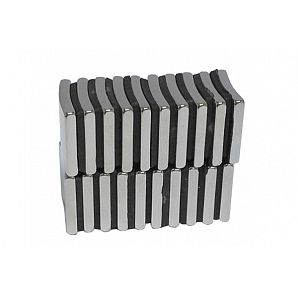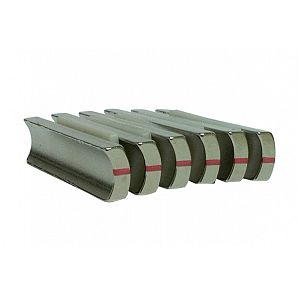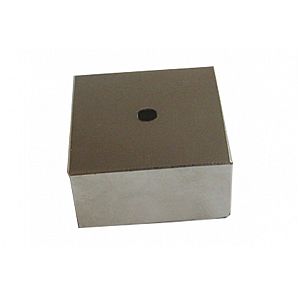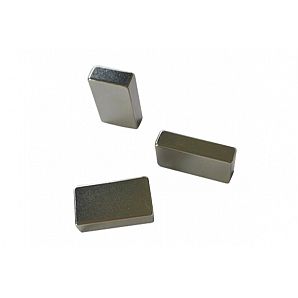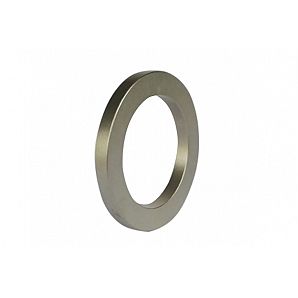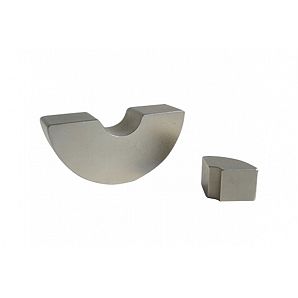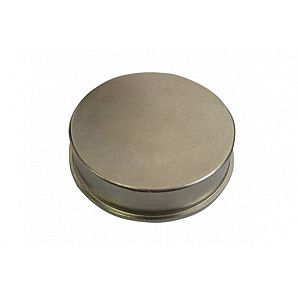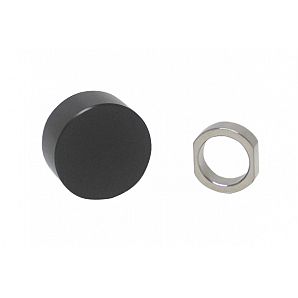Neodymium magnet, also known as neodymium iron boron magnet, is a tetragonal crystal formed by neodymium, iron and boron (Nd2Fe14B). This kind of magnet is second only to the zero degree holmium magnet, and is also a common rare earth magnet. NdFeB magnets are widely used in electronic products, such as hard disks, mobile phones, headphones and battery powered tools. So what are the factors that affect the performance of NdFeB magnets?
1. Effect of raw material composition on magnetic properties of NdFeB
As the name implies, NdFeB is a kind of magnetic material made by powder metallurgy process of rare earth metal neodymium, pure iron and boron. In order to further improve the magnetic properties of NdFeB, other elements can be added on the basis of the ternary system Nd-Fe-B material. However, the influence of the addition of elements on the magnetic properties may be bidirectional, so the performance of the magnetic materials should be determined according to the application occasions of NdFeB Body is required to determine the added element.
2. Effect of production process on high magnetic properties of NdFeB
In order to obtain high performance Nd-Fe-B permanent magnets, new technologies and processes are emerging. In the production process of sintered NdFeB, the main problem is to prevent the precipitation of α - Fe phase and the oxidation of alloy, so it is difficult to obtain the ideal microstructure. In order to solve these problems, new methods and processes are emerging in practice, such as adding anti oxidant, lubricant, and adopting rapid quenching and slitting method to prepare magnet; homogenization treatment and sheet casting process of ingot; dual phase preparation process; and so on; Wet press molding process, etc.
The advantage of adding large anti oxidant is that the oxygen content of the magnet is reduced, and the magnetic powder can be ground finer, which is conducive to improving the coercivity. In addition, due to the reduction of oxygen content, it is also conducive to improving the coercivity. Compared with the traditional process, the intrinsic coercivity of the magnet with antioxidant can be increased by about 160kA/m.
After adding lubricant, the friction force between magnetic particles becomes smaller, the fluidity of magnetic powder is improved, the orientation degree is increased, and the remanence is increased. The thickness of Nd-Fe-B ribbons is 0.25-0.35mm, which can eliminate α - Fe phase completely. The results show that the oxidation resistance of the powders prepared by slitting method is enhanced, the grain size of the magnets becomes smaller and the coercivity is greatly improved.
3. Influence of working environment on the strong magnetic properties of NdFeB
Temperature: there are strict operating temperature limits for NdFeB magnets. When the operating temperature is higher than the working temperature, the demagnetization of the magnet may occur, but when the temperature is higher than Curie temperature, the demagnetization of the magnet will be irreversible.
Humidity: sintered Nd-Fe-B is a magnetic material pressed and formed by powder metallurgy process. Its internal structure is porous and easy to be oxidized. Therefore, sintered NdFeB will adopt coating for anti-corrosion treatment. However, the coating can not fundamentally deal with the influence of environmental humidity on the magnet. The drier the environment, the longer the magnetic properties of the magnet.

